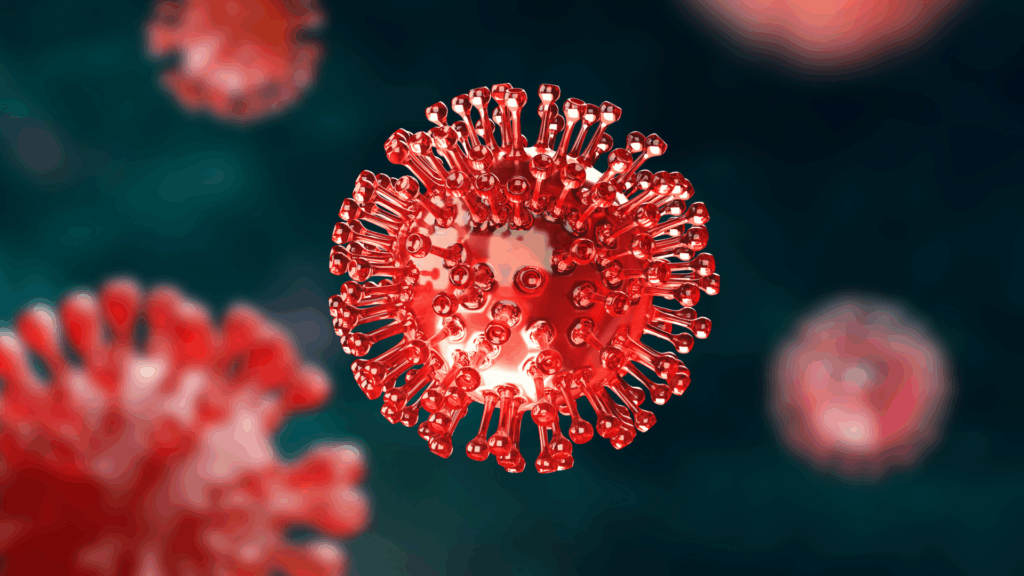
Have you contracted COVID-19 and are wondering about persistent muscle and joint pain? Find out what the studies say, why it happens, and what to do about it.
Context
In some people who have had COVID-19, joint and muscle pain can persist for months or even years. This pain is often part of long COVID (post-COVID/PASC) and can resemble classic rheumatic symptoms (fatigue, aches, stiffness, diffuse pain), sometimes to the point of meeting criteria similar to fibromyalgia syndrome.
What do studies show?
1. Musculoskeletal pain is one of the most common symptoms of long Covid.
Several reviews and studies show that new joint, muscle, and diffuse pain frequently occurs after an acute infection and can persist. These symptoms affect both hospitalized patients and those who have had a mild form of the disease.
2. Sometimes, these pains correspond to symptoms similar to fibromyalgia.
Recent studies show that a significant percentage of patients develop chronic pain syndrome after COVID-19, which can meet the clinical criteria for fibromyalgia (widespread pain, marked fatigue, sleep disturbances, hypersensitivity). This does not mean that all of them become “fibromyalgia sufferers” for life, but the clinical overlap is real.
3. COVID-19 may increase the risk of developing autoimmune diseases/inflammatory rheumatism, but the absolute risk remains low.
Meta-analyses and cohort studies show a statistically significant increase in the risk of developing autoimmune diseases (e.g., rheumatoid arthritis, spondyloarthritis) in the months following infection. However, in absolute terms, the increase remains moderate: the majority of people will not develop a new autoimmune disease.
4. Certain factors increase the risk of persistent symptoms.
Women, a history of musculoskeletal disorders, initial severity of infection, comorbidities, and sometimes prolonged use of corticosteroids or certain immunosuppressive treatments are associated with a higher risk of long COVID and persistent pain.
5. Vaccination reduces the risk of severe forms of the disease and appears to reduce, at least partially, the risk of long Covid.
The data show that vaccination significantly reduces hospitalizations and deaths; several studies also suggest a reduction in the risk of post-acute sequelae in vaccinated individuals, although the effect is not absolute.
Why do these pains occur? (possible mechanisms)
Persistent inflammation after infection that affects muscles and joints.
Immune system dysfunction: transient or persistent autoimmune activation in some individuals.
Alteration of the nervous system (chronic pain linked to central sensitization, as in fibromyalgia).
Indirect consequences: period of inactivity, muscle deconditioning, stress, and sleep disorders, which increase the perception of pain.
These mechanisms can combine and vary from person to person.
What should you do if you have rheumatic pain after Covid?
Consult your primary care physician or rheumatologist if the pain lasts longer > 8–12 weeks, worsens, or is accompanied by joint swelling, prolonged fever, weight loss, or functional limitation. These signs may require tests (blood tests, imaging) to check for inflammatory disease or other causes.
Basic assessment: blood test (CRP, ESR, autoantibody screening if indicated), detailed clinical examination. Do not self-diagnose.
Multimodal approach:
- Graduated physical rehabilitation (physical therapy, adapted exercises) to combat deconditioning.
- Pain management: simple painkillers, targeted treatments if inflammation is present. Avoid inappropriate treatments without medical advice.
- Treatment of sleep and stress (psychotherapy, relaxation techniques) as they have a significant impact on chronic pain.
- Multidisciplinary follow-up if necessary (rheumatologist, physical therapist, pain specialist, psychologist).
Do not stop your immunomodulatory treatments without medical advice. For patients already being treated for an autoimmune disease, the balance between disease control and infection risk must be assessed with the specialist.
Vaccination: Vaccination is still recommended; it reduces the risk of severe forms of the disease and probably reduces the risk of long-term effects. Discuss the vaccination schedule with your doctor if you are taking immunosuppressive drugs.
Supporting your body naturally after long Covid: focus on Fibro and Cuivramine
After a COVID-19 infection, the body often needs time to regain its balance. Persistent fatigue, diffuse muscle pain, joint tension, and disturbed sleep are all possible symptoms of long COVID.
While medical approaches and rehabilitation remain central, certain dietary supplements can support recovery.
🔸 Fibro Classique : helping to manage widespread pain and fatigue
Helps restore energy and vitality by combating intense fatigue, stress, and sleep disorders. Thanks to its plant-based formula, it supports the body throughout the day and promotes restful sleep at night. Scientific studies demonstrate its effectiveness against fibromyalgia and chronic fatigue:
– 75% of patients report an improvement in their quality of life.
– 60% reduce their consumption of painkillers, anxiolytics, and hypnotics.
– Patients report a significant reduction in chronic fatigue, thereby improving their daily well-being.
In cases of long Covid, where fatigue, widespread pain, and muscle hypersensitivity are common, Fibro can help support overall tone and comfort on a daily basis.
🔸 Cuivramine – protect your joints
To relieve joints and preserve cartilage, Cuivramine® combines several natural active ingredients known for their benefits:
– Glucosamine: promotes cartilage regeneration and improves joint flexibility.
– Ginger: known for its soothing properties, it helps reduce inflammation.
– Copper and Vitamin C: two powerful antioxidants that protect and strengthen joints. Unlike traditional slow-acting anti-arthritic drugs (SAADs), Cuivramine® acts directly on the causes of joint discomfort.
Its unique formula allows for:
– Slowing down cartilage degradation, thereby preserving joint flexibility.
– Improving joint mobility, making movements more fluid.
– Reducing joint stiffness and discomfort, for renewed comfort in everyday life.
Final word
If you have prolonged pain after Covid, you are not alone: these symptoms are recognized and are being studied and treated. A medical evaluation, personalized follow-up, and an approach combining rehabilitation, general measures (sleep, activity, stress), and, if necessary, specific treatments can often improve the situation. Don’t hesitate to talk to your doctor about it.





